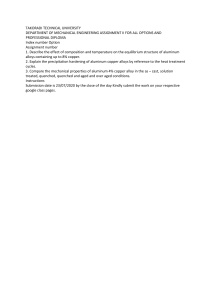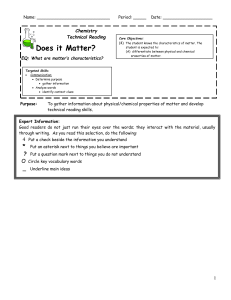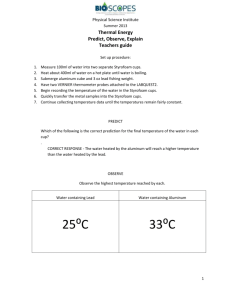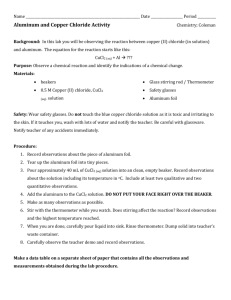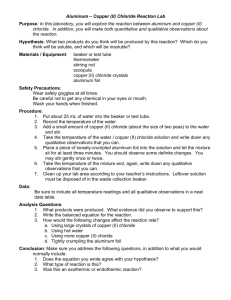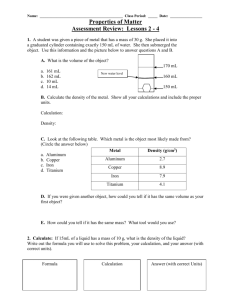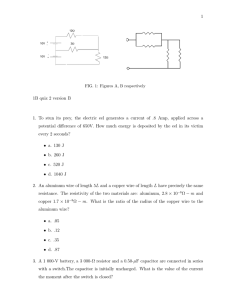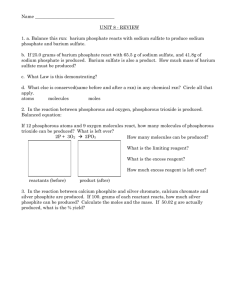H6: Specific heat of aluminum
advertisement
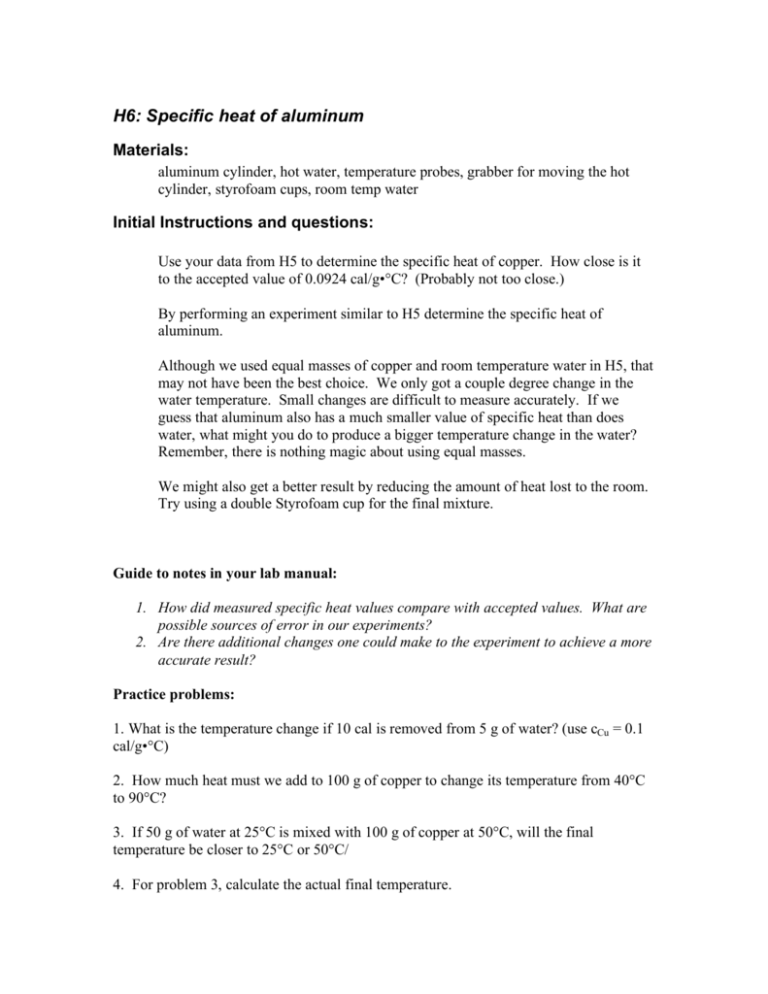
H6: Specific heat of aluminum Materials: aluminum cylinder, hot water, temperature probes, grabber for moving the hot cylinder, styrofoam cups, room temp water Initial Instructions and questions: Use your data from H5 to determine the specific heat of copper. How close is it to the accepted value of 0.0924 cal/g•°C? (Probably not too close.) By performing an experiment similar to H5 determine the specific heat of aluminum. Although we used equal masses of copper and room temperature water in H5, that may not have been the best choice. We only got a couple degree change in the water temperature. Small changes are difficult to measure accurately. If we guess that aluminum also has a much smaller value of specific heat than does water, what might you do to produce a bigger temperature change in the water? Remember, there is nothing magic about using equal masses. We might also get a better result by reducing the amount of heat lost to the room. Try using a double Styrofoam cup for the final mixture. Guide to notes in your lab manual: 1. How did measured specific heat values compare with accepted values. What are possible sources of error in our experiments? 2. Are there additional changes one could make to the experiment to achieve a more accurate result? Practice problems: 1. What is the temperature change if 10 cal is removed from 5 g of water? (use cCu = 0.1 cal/g•°C) 2. How much heat must we add to 100 g of copper to change its temperature from 40°C to 90°C? 3. If 50 g of water at 25°C is mixed with 100 g of copper at 50°C, will the final temperature be closer to 25°C or 50°C/ 4. For problem 3, calculate the actual final temperature.
